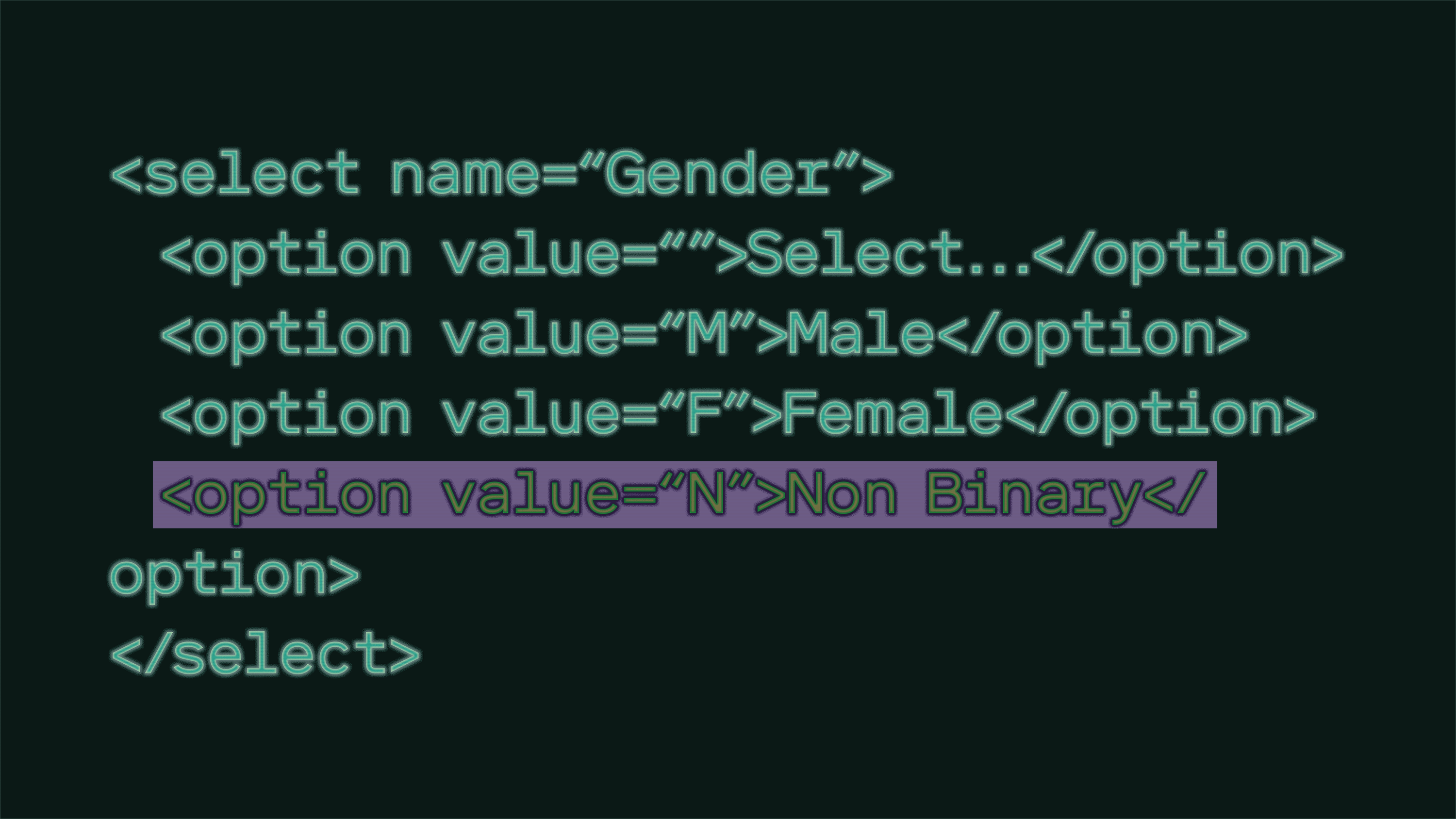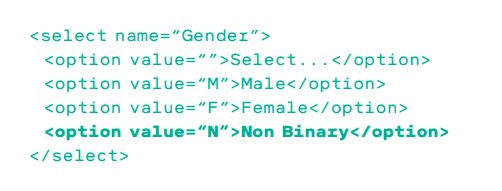Software can do better than ‘male,’ ‘female,’ and ‘other’
Providing more-expansive gender options is not a difficult coding problem.

For transgender and nonbinary people like me, a society organized into only “male” and “female” makes us feel excluded. And it’s something that happens frequently, especially online.
Take Gmail. There are three gender options when you register. If you choose “other,” you can write in any gender identity. But first you must choose how you’d like Google to refer to you—as “male,” “female,” or “other.”
Why something as dehumanizing as “other”? Even a choice of the three most popular—“he,” “she,” and “they”—would be reasonable. From a coding perspective, it would be quite simple to update the dropdown language.
It should not be difficult for companies to improve gender inclusivity on existing forms. Providing additional options often requires just changing or adding a few lines of code. Here’s what it would look like to add a third gender category in PHP, which is used to program many web forms:

Of course, not all software is easy to update. For one thing, databases that limit what information can be stored in the gender field may need extensive overhauls to accommodate more choices. That’s why it’s important for developers to create an inclusive program during the design stage, so that gender-diverse users can feel welcome at launch.
Though a minority, trans people are still a large demographic for software. According to estimates, there are over 1.4 million transgender adults in the US—around twice the population of Alaska. How is it that we accept one of the least populated states as the second option in an alphabetized menu of dozens of options, but find it inconvenient to add a few more genders?
“Female” and “male” should be at the top of the list; 99.5% of the population shouldn’t have to scroll excessively to find their gender. As a trans person, I’m simply asking that developers include options for everyone who uses their software. As a developer, I know that’s not too big an ask.
Everett Franchuk is a web developer and writer based in Winnipeg, Manitoba.
This article has been updated to acknowledge that some databases may better support changes to gender options than others.
Deep Dive
Computing
How ASML took over the chipmaking chessboard
MIT Technology Review sat down with outgoing CTO Martin van den Brink to talk about the company’s rise to dominance and the life and death of Moore’s Law.
How Wi-Fi sensing became usable tech
After a decade of obscurity, the technology is being used to track people’s movements.
Why it’s so hard for China’s chip industry to become self-sufficient
Chip companies from the US and China are developing new materials to reduce reliance on a Japanese monopoly. It won’t be easy.
Stay connected
Get the latest updates from
MIT Technology Review
Discover special offers, top stories, upcoming events, and more.